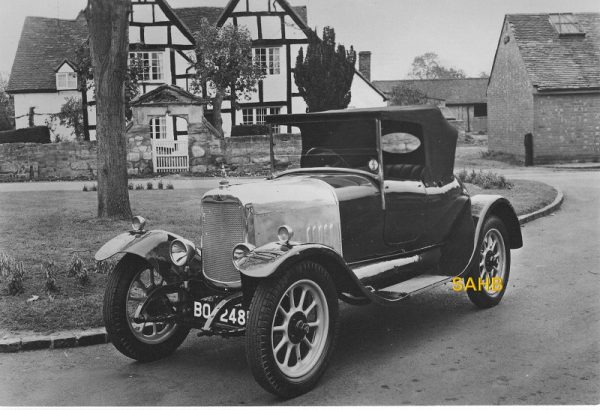
The Alvis 12/50 is rightly considered to be one of the great vintage cars – but less is discussed about its predecessor the 10/30, the first production car built by Alvis in 1920.
The original company, T.G. John and Company Ltd. was founded in 1919 by Thomas George John (1880–1946). Its first products were stationary engines, carburettors and motor scooters. The cars took the name Alvis, a name thought up by the company’s first engine designer Geoffrey de Freville (1883–1965). Many explanations have been given for the name’s origin, but de Freville insisted that he chose it simply because it was easy to pronounce in any language.
The car’s logo was initially a winged green triangle (just visible in our picture) but following complaints from the Avro aircraft company whose logo was similar the logo was changed to the since famous inverted red triangle. On 14 December 1921 the company officially changed its name to The Alvis Car and Engineering Company Ltd.
De Freville’s first engine design, used in the 10/30, was a 1460cc side-valve four-cylinder engine with aluminium pistons and pressure lubrication, which was unusual for that time. The car was an instant success and established the company’s reputation for high quality workmanship and superior performance, with a total of 770 being sold. Some later 10/30 cars, named Super Sports, had overhead valves – a development that was transferred in 1923 to the Alvis 12/50, the highly successful sports car that was produced until 1932.
Before the 12/50, however, came the 1921 11/40, with displacement increased to 1598cc by lengthening the stroke. Only 54 were produced. Then in 1922 came the 12/40 with improved gearbox and rear axle. 1887 12/40s were built until 1925.
1927 saw the introduction of the six-cylinder Alvis 14.75 and this engine became the basis for a long line of luxurious six-cylinder Alvis cars produced up to the outbreak of the Second World War, such as the Speed 20, the Speed 25, and the Alvis 4.3 Litre.
Photograph courtesy of Peter Card







Leave a Comment